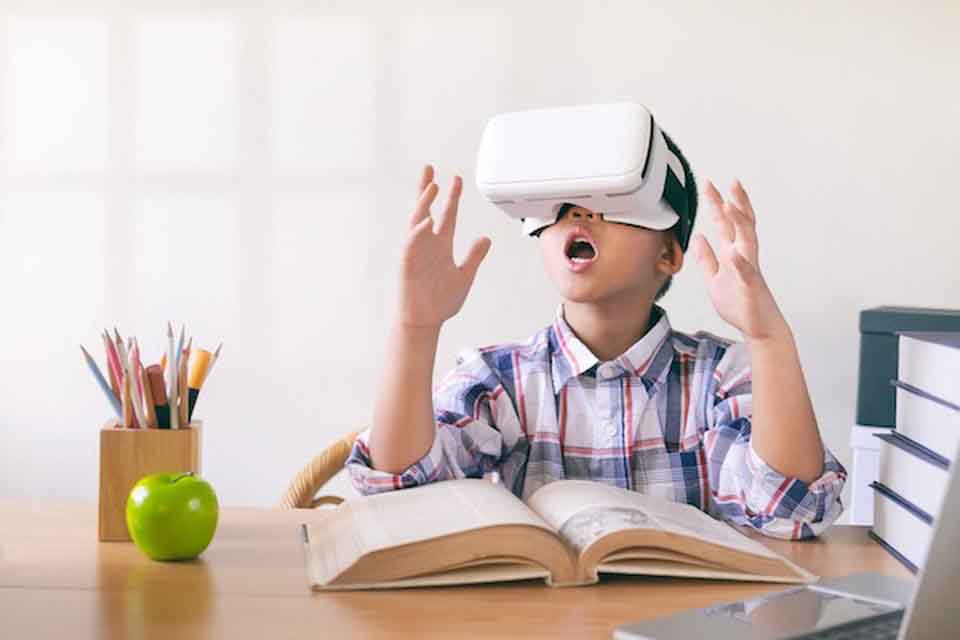The Rise of VR in Education and What It Means for Students

The integration of VR in education is rapidly reshaping the academic experience. No longer confined to traditional classrooms, students now engage with immersive environments that simulate historical events, replicate scientific phenomena, and visualize abstract concepts with unprecedented clarity. This technological evolution is not merely a novelty—it represents a fundamental shift in how knowledge is delivered, absorbed, and applied.
Immersive Learning Environments
Virtual reality enables students to step inside the subject matter. Whether walking through the ruins of ancient civilizations or exploring the anatomy of the human body in three dimensions, learners are no longer passive recipients of information. They become participants in dynamic, multisensory experiences that foster deeper understanding.
This immersion enhances cognitive retention. Studies show that experiential learning—especially when paired with spatial interaction—activates multiple regions of the brain, reinforcing memory and comprehension. The result is a more intuitive grasp of complex topics, from quantum physics to cultural anthropology.
Bridging Educational Gaps
Access to quality education has long been hindered by geographic, economic, and infrastructural barriers. Virtual reality offers a solution. Students in remote or underserved regions can now access simulations of world-class laboratories, attend virtual lectures from leading institutions, and collaborate with peers across continents.
This democratization of learning levels the playing field. It empowers students regardless of location or background, fostering inclusivity and equity. Moreover, it reduces dependency on physical resources, allowing educational institutions to scale their offerings without proportional increases in cost.
Enhancing Engagement and Motivation
Traditional pedagogical methods often struggle to maintain student attention. Virtual reality, by contrast, captivates. The novelty of the medium, combined with its interactive nature, stimulates curiosity and enthusiasm. Learners are more likely to engage with content when it feels relevant, immediate, and visually compelling.
Gamified modules, adaptive challenges, and real-time feedback further enhance motivation. Students can explore scenarios at their own pace, revisit difficult concepts, and receive personalized guidance. This autonomy cultivates a sense of ownership over the learning process.
Supporting Diverse Learning Styles
Every student learns differently. Some thrive through visual stimuli, others through kinesthetic interaction, and still others through auditory cues. Virtual reality accommodates this diversity. It offers customizable experiences that align with individual preferences and needs.
For students with learning disabilities or sensory sensitivities, VR can be tailored to reduce cognitive load and enhance accessibility. Features such as voice narration, adjustable environments, and tactile feedback ensure that all learners can participate meaningfully.
Preparing Students for Future Careers
The professional landscape is evolving. Fields such as architecture, medicine, engineering, and aviation increasingly rely on virtual simulations for training and development. By integrating VR into education, students gain early exposure to tools and methodologies they will encounter in the workforce.
This familiarity enhances employability. It equips learners with digital fluency, spatial reasoning, and collaborative competencies. Moreover, it fosters adaptability—a critical trait in industries shaped by rapid technological change.
Facilitating Safe Experimentation
Certain subjects involve inherent risk. Chemistry labs, surgical procedures, and mechanical engineering projects can pose safety concerns. Virtual reality mitigates these risks by allowing students to experiment in controlled, simulated environments.
Mistakes become learning opportunities rather than liabilities. Learners can repeat procedures, test hypotheses, and explore alternatives without fear of injury or damage. This freedom encourages exploration and innovation.
Redefining Teacher Roles
As virtual reality becomes more prevalent, the role of educators evolves. Teachers transition from information providers to facilitators of experience. They curate content, guide exploration, and support reflection. This shift enhances pedagogical depth and fosters more meaningful interactions.
Professional development is essential. Educators must be equipped with the skills to integrate VR effectively, assess student progress within immersive contexts, and adapt curricula to leverage the technology’s strengths.
Addressing Ethical and Psychological Considerations
While the benefits of virtual reality are substantial, ethical and psychological implications must be considered. Prolonged exposure to immersive environments can affect perception and cognition. Safeguards must be in place to ensure healthy usage patterns.
Content must be age-appropriate, culturally sensitive, and pedagogically sound. Developers and educators share responsibility for creating experiences that are not only engaging but also respectful and constructive.
Encouraging Interdisciplinary Collaboration
Virtual reality blurs the boundaries between disciplines. A single simulation might incorporate elements of history, science, art, and language. This convergence fosters holistic thinking and interdisciplinary collaboration.
Students learn to approach problems from multiple angles, synthesizing knowledge across domains. This integrative mindset is invaluable in addressing real-world challenges, which rarely conform to academic silos.
The ascent of virtual reality in education signals a transformative moment in academic history. It redefines how students interact with knowledge, how educators facilitate learning, and how institutions deliver value. More than a technological trend, it is a pedagogical revolution—one that promises to elevate engagement, accessibility, and innovation.
As the educational landscape continues to evolve, virtual reality will play a pivotal role in shaping the minds of tomorrow. It empowers students to learn not just with their intellect, but with their imagination—bridging the gap between information and inspiration.





